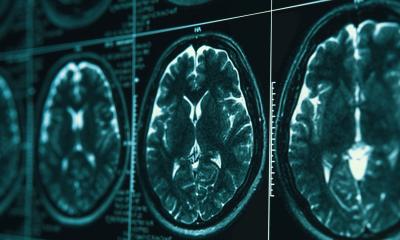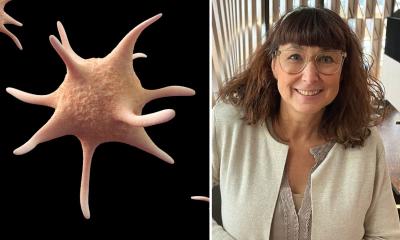Oncology
Breast tumor stiffness and metastasis risk linked by molecule’s movement
Researchers at the University of California, San Diego School of Medicine and Moores Cancer Center have discovered a molecular mechanism that connects breast tissue stiffness to tumor metastasis and poor prognosis. The study may inspire new approaches to predicting patient outcomes and halting tumor metastasis.

“We’re finding that cancer cell behavior isn’t driven by just biochemical signals, but also biomechanical signals from the tumor’s physical environment,” said senior author Jing Yang, PhD, associate professor of pharmacology and pediatrics.
In breast cancer, dense clusters of collagen fibers makes the tumor feel stiffer than surrounding tissue. That’s why breast tumors are most often detected by touch — they feel harder than normal breast tissue. But it’s also known that increased tumor stiffness correlates with tumor progression and metastasis, as well as poor survival.
To determine how tissue stiffness influences tumor behavior, the team of cancer biologists and bioengineers used a hydrogel system to vary the rigidity on 3D cultures of breast cells from that typically experienced by normal mammary glands to the high stiffness characteristic of breast tumors. They discovered that high stiffness causes a protein called TWIST1 to lose its molecular anchor and move into the cell’s nucleus. In the nucleus, TWIST1 activates genes that enable breast cancer cells to invade surrounding tissue and metastasize to other places in the body.
The researchers also compared mouse models of human breast cancer with and without TWIST1’s anchor, a protein called G3BP2. Without G3BP2, tumors were more invasive and developed more metastases in the lung, compared to tumors with G3BP2.
The same mechanism plays out in human breast cancers, too, the researchers found. Analysis of human breast cancer patient samples showed that patients with stiffer tumors (meaning tumors with more organized collagen structures) did not survive as long as patients with more compliant tumors with disorganized collagen. Patients with both low G3BP2 and stiffer tumors had even shorter survival times. The correlations were so clear the team could use these factors — G3BP2 protein levels and collagen organization — to predict patient outcome.
“Next we want to understand exactly how cells interpret mechanical cues into biological responses,” said Laurent Fattet, PhD, a postdoctoral researcher in Yang’s lab who led the study, along with former graduate student Spencer Wei. “This cross-talk between a tumor’s biomechanical microenvironment and the inter-workings of individual cancer cells may someday provide new therapeutic strategies to slow cancer’s spread.”
Reference:
Co-authors of this study also include Jeff H. Tsai, Vincent H. Pai, Hannah E. Majeski, Albert C. Chen, Robert L. Sah, and Adam J. Engler, UC San Diego; Yurong Guo, and Susan S. Taylor, Howard Hughes Medical Institute and UC San Diego.
Source: UC San Diego
25.06.2015











